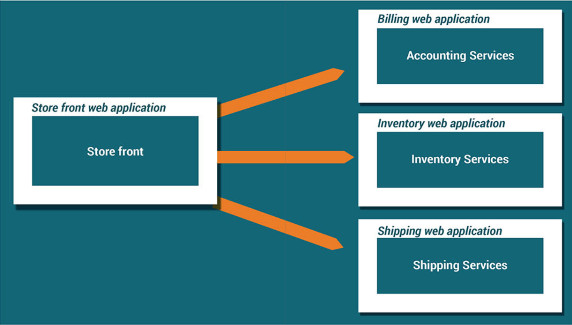Micro Services Architecture Genesis and Benefits
MicroServices a suite of small services, each running in its own process and communicating with lightweight mechanisms often an HTTP resource API. Micro Service Architecture (MSA) is quite similar compared to Service Oriented Architecture(SOA) in the industry. Both emphasis about services as the cornerstone for the architecture. Let’s first explore what exactly is a MSA.
Micro service architecture is a distinctive method of developing software systems as a suite of independently deployable, small, modular services in which each service runs a unique process and communicates through a well-defined, lightweight mechanism to serve a business goal. It has grown and become a popular software architecture style, courtesy of its leaps and bounds in the past few years. In this model, large and complicated applications are broken down into small and manageable processes that communicate with each other using language-agnostic Application Program Interfaces(APIs). Micro services are small, highly decoupled services that focus on conducting minute tasks.
So, a micro-services architecture would involve developing a single yet meaningful functional feature that will act as a single service, with each service having its own process and lightweight communication mechanism that is initiated in single or multiple servers.
Example of how Micro Services are implemented:
Let’s assume that you are building an e-commerce application that takes orders from customers, verifies inventory and available credit, and ships them.
The application consists of several components including the StoreFrontUI, which implements the user interface, along with some backend services for checking credit, maintaining inventory and shipping orders. The application is deployed as a set of services.
Y axix scaling – application level

Apply X axis cloning and/or Z axis partitioning to each service
This application is likely using different services such as Accounting, Inventory services and Shipping service. Each of this functionality is effectively running as an independent service and composed together. Each service runs in its own process and communicating with lightweight mechanisms. These services will have their own database in order to decouple from other services. When necessary, consistency between databases is maintained using either database replication mechanisms or application-level events. These services are independently deployable. With this approach, it is easier to deploy new versions of services frquently.
MicroServices, the name suggests that the services need to very small and probably very fine grained but in reality no size restrictions apply. Ironically, it’s the size (and focus) of services that commonly cripple SOA implementations.
Benefits of Micro Services Architecture:
- Simplicity -Code is easier to understand
- More productive in speeding up the deployments
- Each service can be deployed independently
- Makes continuous deployment feasible
- Develops, deploys and scales each serviceindependently
- Improves fault isolation
- Eliminates any long-term commitment to a technology stack
- Easier to deploy new versions of services frequently
How MSA is useful to UI developers:
Micro services architecture helps UI developers in building an entire portfolio of applications where services and resources are shared, allowing you to eliminate redundant workflows. So,instead of maintaining an array of monolithic applications by various teams where architects and support resources end up duplicating each other’s effort, UI developers can now draft and design their applications from an existing service that has already been built and setup by others.
It is useful to note that this is not the same as reusing old codes, because as a UI developer, you’re embedding a live service that will become a part of your application and will benefit all applications that use that service. It’s independent code bases, independent deployability and having different teams work on different parts of the stack without having to coordinate with each other is what makes it the preferred choice.
Conclusion:
Micro services architecture has been used to describe a peculiar and effective method of designing applications as a package of independently deployable services. And as an innovative concept that’s blossomed out of an old idea, micro services architecture has shown stellar potential in describing development patterns that web developers keep incorporating into their design.

